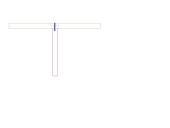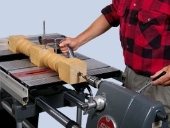












A temporary pin for use in traditional pegged timber frame building. The pin is used in place of the oak peg during construction and assembly of the frame.
Forged from solid stainless or mild steel bar, and ground to a smooth finish, with a T-handle (useful for knocking out wooden pegs!).
Stainless pins are recommended for green oak that is likely to be getting wet while the pins are in place, as mild steel, water and the oak's tannin will stain the wood.

 1
1








“It’s said war—war never changes. Men do, through the roads they walk. And this road—has reached its end.”
 1
1




Jordan Holland wrote:Something else I just thought of: the wooden pins flex and take the shape of the offset, locking the joint in place. I wonder if an unyielding steel pin might damage the tenon, possibly even splitting it?
Nails are sold by the pound, that makes sense.
Soluna Garden Farm -- Flower CSA -- plants, and cut flowers at our farm.





Kenneth Elwell wrote:
Jordan Holland wrote:Something else I just thought of: the wooden pins flex and take the shape of the offset, locking the joint in place. I wonder if an unyielding steel pin might damage the tenon, possibly even splitting it?
I think the taper of the steel framing pin allows it to take up the difference between the offset holes without being driven any tighter than necessary to pull the joint tight, then the T-handle allows it to be removed by twisting and pulling rather than drifting out. If the work is done in a shop, it will be together and apart at least once to fit it and move it to the site, repeat inserting/removing wooden dowels and I can see a savings in time and materials.
Some of the photos I just viewed of a raising had a mix of dowelled joints, framing pins, and not-yet-dowelled joints. Whether it's leaving some freedom of movement for fitting parts during the raising, or effective use of labor to get the lifting done NOW and get the pegging done later... I'm sure there's a lot left up to personal preference.
“It’s said war—war never changes. Men do, through the roads they walk. And this road—has reached its end.”

|
there is always a bigger fish to eat the tiny ads:
The new permaculture playing cards kickstarter is now live!
https://www.kickstarter.com/projects/paulwheaton/garden-cards
|





